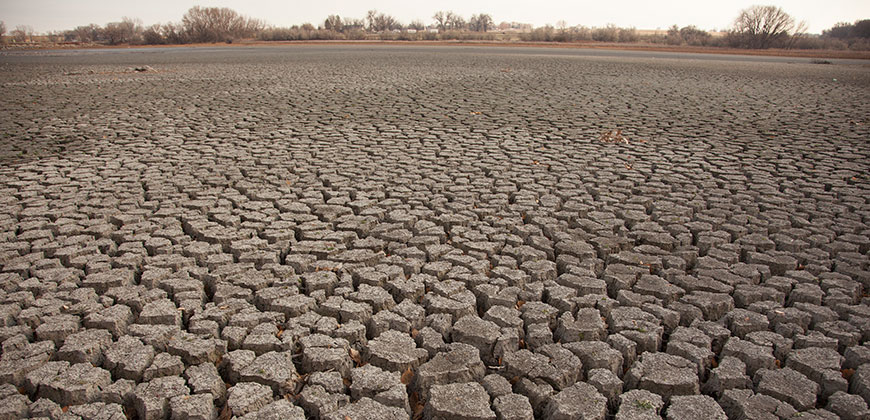
In case you haven’t heard, the state of Colorado is officially in a drought.
But what does that mean? How does one define “drought,” anyway? Who decides the severity of drought conditions?
The people with the answers are climatologists at Colorado State University, who work day and night studying drought. They provide that information to the U.S. Drought Monitor, which is updated every Thursday, 52 weeks a year.
Colorado State Climatologist Nolan Doesken leads the team at the Colorado Climate Center, which keeps close tabs on weather, climate and water conditions throughout Colorado, all year long. The team is also tasked with monitoring drought conditions across the Intermountain West region of Colorado, Utah, Wyoming, New Mexico and Arizona, with the support of the National Integrated Drought Information System. The Colorado Climate Center specializes in the upper Colorado River basin.
“We had a tough drought year in 2012 that carried into 2013, but more recently most of the state has been relatively drought free,” Doesken said. “2014 and 2015 were both pretty good years, right on into the spring of 2016. From there things have been eroding, first here on the Front Range starting in early summer. Gradually since then, much of the Eastern Plains has been drying out.”
Defining drought
Drought isn’t just drought. There are five levels of drought that experts label D0, or “abnormally dry,” all the way through D4, or “exceptional.” Most of Colorado is holding steady in the “abnormally dry” to “moderate” categories. Parts of California and the southeastern U.S. currently suffer from the most severe drought conditions.
Becky Bolinger, a climatologist and drought specialist at the Colorado Climate Center, developed a drought summary to help guide the team with monitoring efforts. The team, which also includes research associates Peter Goble and Zach Schwalbe, makes official recommendations to the U.S. Drought Monitor every week. These are based on a variety of indicators, including data from CoCoRaHS citizen scientists.
The U.S. Drought Monitor is used extensively by local forecasters and media to keep a finger on the pulse of nationwide conditions. What many don’t realize is that the U.S Drought Monitor relies heavily on the expertise of locally embedded climatologists – and in Colorado, that’s the CSU team.
At present, the agricultural sector is particularly interested in drought conditions, because it is among those most sensitive to drought’s impacts, Bolinger said. For example, the current drought has delayed dormancy of grasslands and stalled winter wheat germination due to lack of precipitation.
“As a result, we have recently received a lot of input and participation from the ag sector as we update our weekly summary and provide recommendations to the U.S. Drought Monitor,” Bolinger said.
In addition, the Colorado Climate Center partners closely with CSU Extension, which offers up-to-date drought information and a statewide drought response program.
Snowpack update
Following a later-than-normal start to snow season in the mountains, snowpack in Colorado is holding at about 43 percent of expected average.
“Now, 43 percent of average snowpack doesn’t sound so great, but in November, it’s not terrible,” Doesken said, “If it were February, that would be a bigger problem. We’ve had a slow start to the season, but we could recover fairly easily.”
The Colorado Climate Center drought summary is updated every Tuesday.
Contact the Colorado Climate Center staff for information on drought, climate, weather and more.